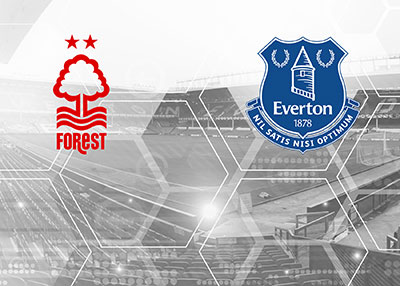At The Political Economy of Football website, Wyn Grant provides a more contexted overview of Everton and especially their finances over the last few years, with the construction of the new Everton Stadium looming large.
Everton have lost money seven years in a row, adding up to a staggering £566m. The good news is that their deficits have been smaller in the last three years, though the total loss was still a hefty £181m. That said, this still represents a significant improvement over the preceding 3-year period, when the aggregate loss was more than twice as much at £373m.
To Illustrate the magnitude of Everton’s poor financial performance, their £553m loss in the last six years was the worst in the Premier League, far above Aston Villa £411m and Manchester United £330m, though Chelsea would have been a little higher than the Toffees if their asset sales were excluded. Even after the improvement in the last three years, their £181m loss in this period was still the fourth highest in England’s top flight, so the message is unequivocal: Everton lost a tremendous amount of money under Moshiri.
Much of Everton’s debt has arisen due to the investment in the new 52,888 capacity stadium at Bramley-Moore Dock, which could be a game changer for the club, when it opens at the start of next season.
The new stadium has required numerous sacrifices during its development, but it will offer additional revenue-generating opportunities that could be transformative to the club’s fortunes. It will be interesting to see whether this new-found confidence is reflected in this summer’s transfer campaign, as the squad is in need of a major overhaul after a few years of austerity.
» Read the full article at The Political Economy of Football
Reader Comments (14)
Note: the following content is not moderated or vetted by the site owners at the time of submission. Comments are the responsibility of the poster. Disclaimer ()
2 Posted 22/04/2025 at 15:05:02
But the answer to your question is an unequivocal yes from me. It's important to note that Everton hasn't lost all that money -- Everton's owners have lost all that money.
And none of 'em -- not Moshiri or Kenwright or any of those who preceded them -- are relevant today, except as historical objects of frustration and perhaps gratitude (I know I'll offer Farhad a thought of thanks when I sit down in the new stadium). The Friedkins haven't lost a dime on this club. Yet, anyway.
So Grant's figures are the financial equivalent of cave paintings -- ancient and fascinating, but unconnected to the present day.
3 Posted 22/04/2025 at 15:15:40
Sure Moshiri / Usmanov lost money – but presumably TFG acquired a club with substantial losses. Those losses and associated problems are not now just consigned to history, are they?
4 Posted 22/04/2025 at 15:44:15
But the larger and more obvious issue of the refinanced debt, reported recently at £567 million -- including the £350 million stadium debt -- is what Friedkin purchased deliberately as an investment. It's a big-looking number, but it only qualifies as a problem if it creates some sort of financial strain for a man who's worth $7.5 billion per Forbes today.
I await correction by the corporate financial experts here, but that's how my simple mind understands things.
5 Posted 22/04/2025 at 15:50:02
The £450 million in shareholder loans owed to Moshiri were converted to equity. Otherwise, the overall debt would be £1 billion.
TFG’s refinancing package, which has replaced existing debt on more favourable rates, and the conversion of Moshiri’s interest-free loans to equity has stabilised us.
As reported elsewhere on TW, the stadium could boost the club’s revenue by at least £60m a year thanks to its bigger capacity and corporate hospitality facilities.
As a point of comparison, our matchday revenue in 2023/24 accounts was £19.1 million and commercial revenue from sponsorship, advertising, and merchandising revenue was £21.6m.
So revenue will increase dramatically and cost of servicing debt will reduce.
6 Posted 22/04/2025 at 15:50:48
7 Posted 22/04/2025 at 16:02:45
Mine is that some of those losses would have been related to the new stadium (it might have made overall sense for Moshiri to maximise paper losses?); certainly the (high) interest on those loans would have been a big cost impact, The Friedkin Group's own financing may already have been converted to equity and I think we can all agree that the precious loans will mostly or entirely have been re-structured on which, I hope, are much more favourable terms.
The question is therefore how much wiggle room our new situation allows; specifically, what is our current 'status quo' position? The fly in the ointment is that last Financial Year we still have a wage-to-turnover ratio of over 80% (according to club accounts) What is strange about this is that it gives a figure of around £150M which is pretty much double the first team player wage costs I've seen quoted. It seems incredible half the club's wage bill is non-first-team-player related.
While we have a very large number of expensive players out of contract and I think a big opportunity to do a large scale wage re-structure (and maybe some further pruning of group and company non-playing staff), we are clearly still some way off break-even.
In terms of increasing turnover (while holding the wage ratio constant) Deloitte apparently claimed the new stadium could give match day revenues of £55M versus current revenues of £19M. That is a big and worthwhile boost but: a) it seems ambitious; and b) it will surely also incur additional on-the-day costs given the size increase (we currently employ c 380 matchday temporary staff).
My hunch is we would still be lucky to break even, even with a new stadium. Of course that might still allow us some wiggle room on PSR, although that is apparently being replaced with a new wage-ratio cap (currently discussed as 85% for non European clubs) in 2026-27. This would certainly give us scope to add good quality players subject to the appetite of the new owners to incur ongoing losses.
So as best as I can determine, don't expect fireworks this summer (unless we sell, eg, Branthwaite) but looking ahead, the new 2026-27 regime looks reasonably favourable to us provided Friedkin is willing to 'invest' in the squad, given all the attendant risks involved in that.
8 Posted 22/04/2025 at 16:15:02
In terms of on-the-pitch fortunes, I guess it now largely comes down to how much TFG are prepared to invest in the first team squad and academy and over what period.
But they are now constrained more by willingness rather than anything else – albeit there's talk that PSR still represents a problem this summer at least?
9 Posted 22/04/2025 at 17:25:01
If I'm right (and I may not be) then for sure PSR this next year is more of a constraint than the 2026-27 arrangements (if they are actually implemented) the latter I think would give us more scope, assuming the investment appetite is there (because it would need additional funding, doubt it's even near possible out of cashflow).
I think you said it, the right path but a bit of walking first before running.
10 Posted 22/04/2025 at 17:37:28
We are still a great club though with incredible fans and who knows we may in time be playing beautiful football in a beautiful stadium and financially stable. Whoever writes the book "Everton -How not to run a football club" or perhaps how corruption in football manifests itself then they could make a few bob.
11 Posted 22/04/2025 at 17:51:16
Mark #7, thanks for that clarity. Also, as I read it the stadium revenue projection covers match days only, not the potentially significant revenue stream that would be generated by other events. Is that how you read that number as well?
12 Posted 23/04/2025 at 00:31:19
That wasn't how I read it but there was never much detail as I recall just a press release. I find a tripling in matchday only revenue hard to imagine given the capacity growth is only c 30%. That would be a lot of burgers and pies to sell if events revenue was not included, even if you factor in more hospitality boxes. In any case, events won't raise tens of millions, there is too much competition. Maybe millions.
Of course the figure, I assume, references revenue and there will be higher costs, potentially quite a bit higher, albeit surely still leaving us with some higher net revenue. But if you apply the debt interest, even at the lower rates we hopefully now enjoy, I don't think it will shift our net position all that much, at least in the short term.
13 Posted 23/04/2025 at 01:23:03
Heck, the NFL's San Francisco 49ers had pulled in almost $138 million in luxury suite sales before they started building their new stadium. Now that's Silicon Valley, not Bramley Moore, but still, it's indicative of the opportunity here. The Niners also generate this cash flow year-round by marketing luxury boxes for business meetings and more -- fans book them for engagement parties etc.
I don't know how many boxes have been built at BMD, but I've read that the best are going for £200,000 per season. And remember, the Friedkins are a marketing machine. They didn't make their money from oil pipelines or computer chips or hedge funds. They made it from selling stuff like cars, movies, and -- significantly -- luxury resort accommodations. I wouldn't bet against them turning those boxes into a cash machine.
15 Posted 24/04/2025 at 08:53:09
The Premier League in the meantime via PSR imposed budgets and controls, effectively Managing the Club, until a suitable owner could be found, which they could work with to revive Everton's Finances.
The work on both the Football side and Finance side is ongoing.
Add Your Comments
In order to post a comment, you need to be logged in as a registered user of the site.
Or Sign up as a ToffeeWeb Member — it's free, takes just a few minutes and will allow you to post your comments on articles and Talking Points submissions across the site.
How to get rid of these ads and support TW











1 Posted 22/04/2025 at 14:12:33
Have Everton's recent financial woes been caused mainly by incompetent management of football resources required to run a team in today's Premier League?
Or has the real reason been the massive drain on these resources that was required in order to finance construction of the new Everton Stadium at Bramley-Moore Dock?
I think the answer has to be 'a bit of both' as it seems certain that the vast loss Moshiri made personally in his 'investment' in Everton is actually visible to all in the wonderful edifice he constructed on the banks of the Royal Blue Mersey.
And perhaps it's all water under the bridge now as we do indeed look forward to a new era with much higher expectations and we can perhaps confine such deliberations to the anals of time past?